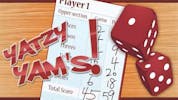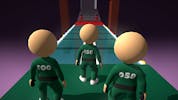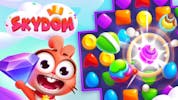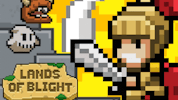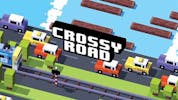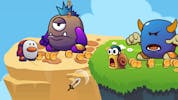Exploring the Classic Sokoban Game: A Journey Through Challenging Puzzle Mazes
Welcome to the captivating world of Sokoban, a classic puzzle game that challenges your logical thinking and strategic planning. Originally created in the 1980s, Sokoban has stood the test of time and continues to captivate puzzle enthusiasts to this day. In this game, you step into the shoes of a warehouse worker tasked with pushing crates to their designated storage locations. Sounds simple, right? Think again!
The catch is that you can only push the crates, never pull them, and you have to navigate through increasingly complex mazes filled with obstacles and limited space. Each level presents a new puzzle to unravel, requiring careful planning, foresight, and the ability to think several steps ahead.
In this article, we will delve into the fascinating gameplay mechanics of Sokoban, explore different strategies to approach the puzzles and provide tips and tricks to help you conquer even the most challenging levels. So, get ready to exercise your brain and embark on an exciting journey through the mind-bending puzzles of Sokoban!
Game Overview and Short History
Sokoban is a captivating puzzle game that has entertained and challenged players for decades. The game revolves around the concept of pushing crates to their designated storage locations within a maze-like environment. Sounds deceptively simple, but don't be fooled! Sokoban is known for its increasingly complex puzzles that require strategic thinking, spatial awareness, and precise movement.
As you progress through the levels, obstacles such as walls, tight spaces, and multiple crates create intricate challenges that will test your problem-solving skills. The beauty of Sokoban lies in its simplicity yet depth, as each move you make can have a ripple effect on the entire puzzle. Patience and planning are essential as you carefully consider the best course of action.
With hundreds of levels to conquer and various puzzle designs, Sokoban offers a rewarding and addictive experience for puzzle enthusiasts. So, prepare to immerse yourself in the world of Sokoban, where every crate push brings you closer to unraveling the maze and achieving puzzle-solving greatness.
1. Gameplay and Mechanics
Sokoban is a puzzle game where players control characters who must push crates to their designated locations within a maze.
The character can move in four cardinal directions (up, down, left, and right) and can only push one crate at a time.
The crates can only be pushed, not pulled, and the character cannot walk through them or walls.
The objective is to successfully push all the crates onto the designated storage locations to complete each level.
As the game progresses, the mazes become increasingly challenging, with more complex layouts, limited space, and obstacles that require careful maneuvering.
Planning and strategic thinking are crucial, as players must consider their moves in advance to avoid getting stuck or blocking themselves.
The game typically features multiple levels, each with its own unique puzzle layout and difficulty.
Some variations of Sokoban may include additional elements such as switches, teleporters, or movable walls, adding further complexity to the puzzles.
The game often incorporates a scoring or star system, encouraging players to complete levels in fewer moves or within a certain time limit.
Sokoban can be played on various platforms, including computers, mobile devices, and handheld gaming consoles.
The game provides a challenging and mentally stimulating experience that tests players' problem-solving skills, logic, and spatial reasoning abilities.
Sokoban is known for its simple yet addictive gameplay, offering hours of engaging puzzle-solving entertainment.
The rules and mechanics of Sokoban are easy to understand, making it accessible to players of all ages and skill levels.
The game rewards patience, careful planning, and persistence, as each successful crate push brings players closer to overcoming the puzzle challenges.
2. Key Features of the Game
Challenging puzzle gameplay that exercises logical thinking and problem-solving skills.
A variety of increasingly difficult levels and maze layouts to keep players engaged and entertained.
Simple and intuitive mechanics allow players to focus on the puzzles without complex controls or rules.
Strategic planning and foresight required to navigate through obstacles and avoid getting trapped.
Engaging and addictive gameplay encourages players to overcome each level's puzzle with fewer moves or in less time.
Puzzles progressively increase in complexity, providing a satisfying sense of achievement as players overcome difficult challenges.
A wide range of puzzle designs and variations offer a diverse and ever-evolving gameplay experience.
Accessible to players of all ages and skill levels, making it suitable for both casual and dedicated puzzle enthusiasts.
Portable gameplay, with Sokoban available on various platforms, allows players to enjoy the game on-the-go.
A timeless classic that has stood the test of time, maintaining its popularity and intrigue over the years.
Opportunities for experimentation and trial-and-error allow players to learn from their mistakes and refine their strategies.
Minimalistic yet visually appealing graphics that focus on the gameplay and puzzle-solving experience.
A sense of satisfaction and accomplishment when successfully solving a challenging level or progressing through the game.
A community of Sokoban enthusiasts who share their strategies, tips, and custom-level designs, fostering a sense of camaraderie and competition among players.
3. Visuals and Sound Design of the Game
Sokoban games typically feature simple and minimalist visuals that focus on the puzzle elements and gameplay mechanics.
The graphics often consist of clean and distinct designs, using a grid-based layout to represent the maze and its objects.
The color scheme is usually straightforward, with contrasting colors to differentiate between walls, crates, storage locations, and the player character.
Some Sokoban games may offer different visual themes or styles, ranging from retro pixel art to modern and polished graphics.
The visuals aim to provide clarity and ease of understanding, allowing players to assess the maze layout and plan their moves accordingly quickly.
The sound design in Sokoban games is often minimalistic, with subtle audio cues and effects.
Players may hear sound effects when moving the character, pushing crates, or completing a level, adding satisfying audio feedback to their actions.
Background music, if present, is typically calm and unobtrusive, providing a relaxing ambiance that complements the puzzle-solving experience.
The sound effects, such as crate movements or collisions with walls, contribute to the overall immersion and help players gauge their actions and progress.
The combination of visuals and sound design in Sokoban games creates a cohesive and immersive experience, enhancing the player's engagement and focus on solving the puzzles.
The emphasis on simplicity and clarity in the visuals and sound design allows players to concentrate on the logic and challenges presented by each level.
Some Sokoban games may offer customization options for visuals and sound, allowing players to personalize their experience according to their preferences.
Overall, Sokoban games' visuals and sound design are thoughtfully crafted to provide an enjoyable and immersive puzzle-solving environment.
4. Tips and Tricks of the Game
Take your time to analyze the puzzle before making your moves. Planning and strategy are crucial in Sokoban.
Start by moving the crates closest to the walls and corners, as they are generally easier to maneuver into their designated locations.
Avoid making unnecessary moves or pushing crates into dead ends, as it can quickly lead to getting stuck and having to restart the level.
Try to create open paths and clear corridors within the maze to facilitate the movement of both the character and the crates.
Use the walls and obstacles to your advantage, as stopping points for crates or as guides to navigate the maze.
Always think several steps ahead and consider the consequences of each move. Anticipate how your actions will affect the positions of the crates and the overall puzzle solution.
Take note of the specific rules and mechanics of each level. Some levels may have additional elements or special requirements that must be considered.
Experiment with different approaches and strategies. What works for one level may not work for another, so be open to trying new methods.
Utilise the undo or reset options if you make a mistake or get stuck. Don't be afraid to backtrack and reassess your moves.
Pay attention to patterns and recurring puzzle structures. Recognizing common setups and solutions can help you solve similar puzzles more efficiently.
Break down complex puzzles into smaller sub-goals. Focus on moving a single crate simultaneously and gradually build towards the final solution.
Practise spatial reasoning and visualization skills. Being able to mentally map out the maze and plan your moves in advance will greatly improve your success rate.
Take breaks if you feel stuck or frustrated. Sometimes stepping away from the game and returning with a fresh perspective can lead to new insights and solutions.
Enjoy the process of puzzle-solving. Sokoban is a game that rewards patience, persistence, and the satisfaction of overcoming challenges.










